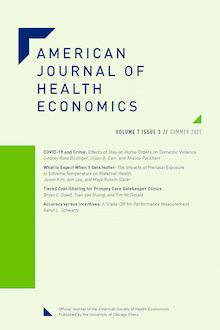
Who Pays in Pay-for-Performance? Evidence from Hospital Prices and Financial Penalties
Michael Darden, Ian Mccarthy, Eric Barrette
Abstract
Public pay-for-performance (P4P) programs tie hospital payments to predetermined sets of quality measures and are intended to encourage or discourage certain outcomes. To the extent that financial penalties from these programs induce some response by hospitals, such penalties may translate into higher negotiated payments from commercial insurance payers. In this paper, we employ data on commercial insurance payments from a large, multi-payer database to study the extent to which penalties levied under the Hospital Readmission Reduction Program (HRRP) and the Hospital Value-Based Purchasing (HVBP) program, two major P4P components of the Affordable Care Act, caused changes in private hospital payments. We find that the bulk of any penalties resulting from HRRP and HVBP are borne by private insurance patients in the form of higher private insurance payments. Specifically, we show that HRRP and HVBP financial penalties led to increases in private payments of 1.9 percent, with effects concentrated among circulatory system procedures. These penalties were also associated with a 3.1 percent reduction in Medicare discharges. Our estimates are larger for hospitals with higher shares of privately insured patients, which suggests the importance of hospital bargaining power in facilitating higher commercial insurance payments.
Citation
Who Pays in Pay-for-Performance?: Evidence from Hospital Prices and Financial Penalties
Michael Darden, Ian Mccarthy, and Eric Barrette
American Journal of Health Economics 2023 9:3, 435-460
